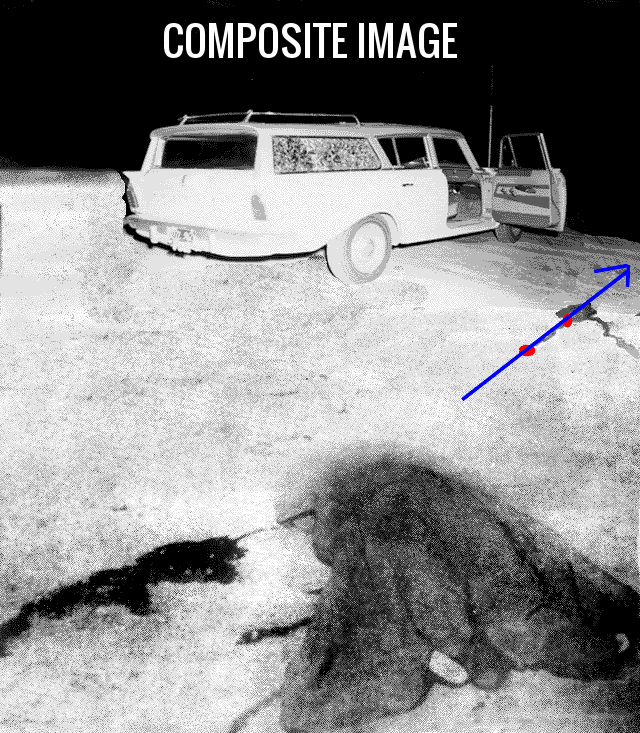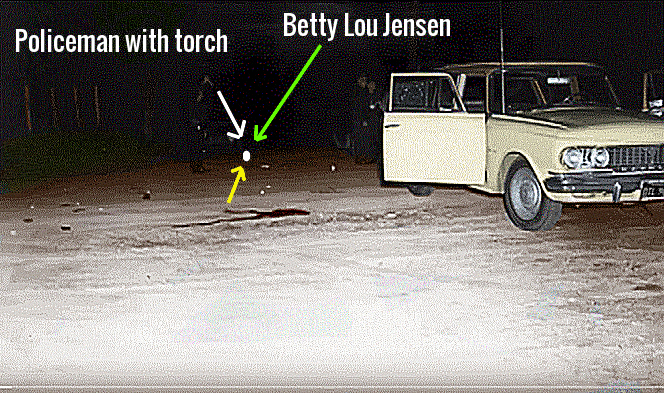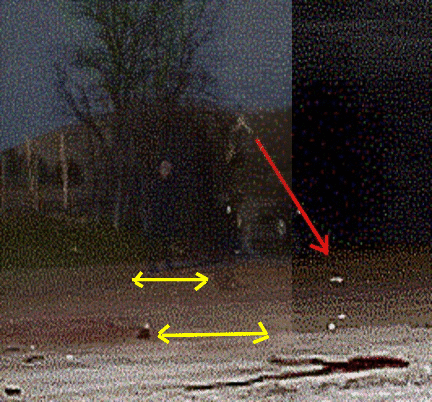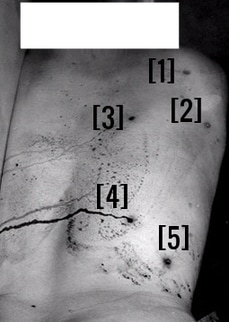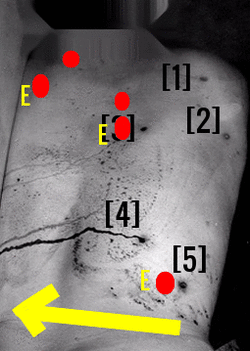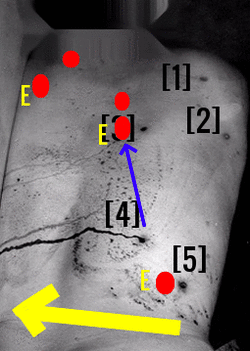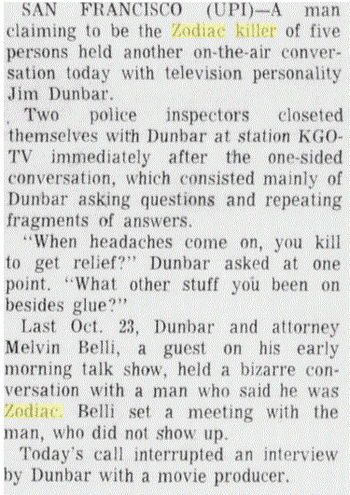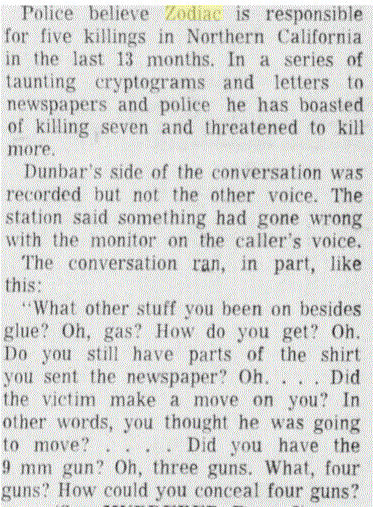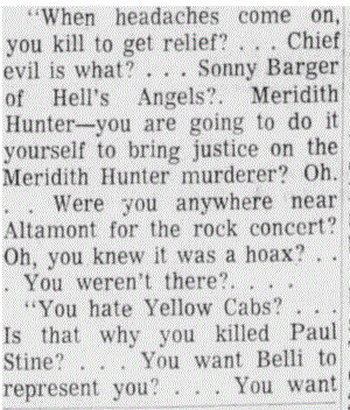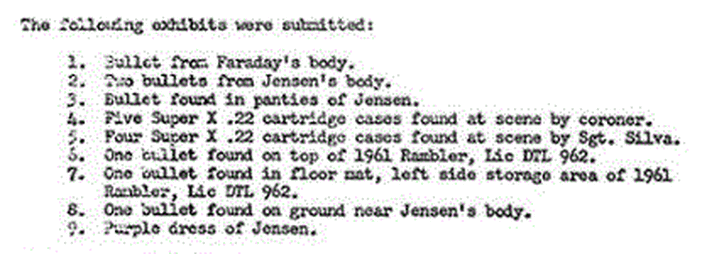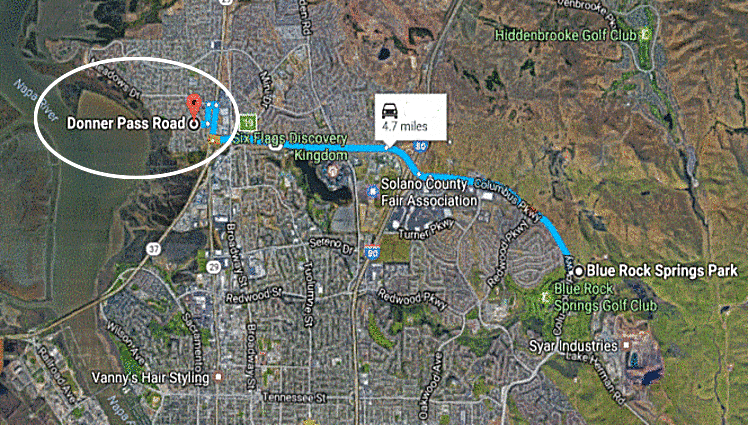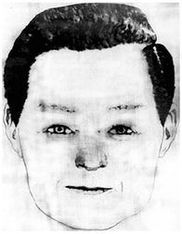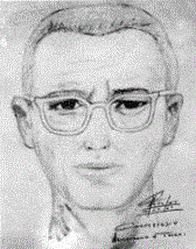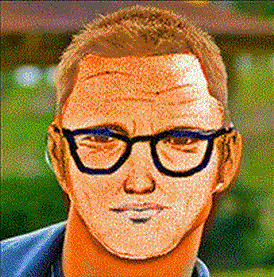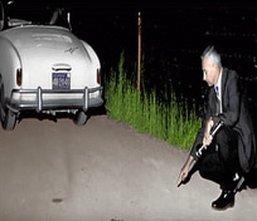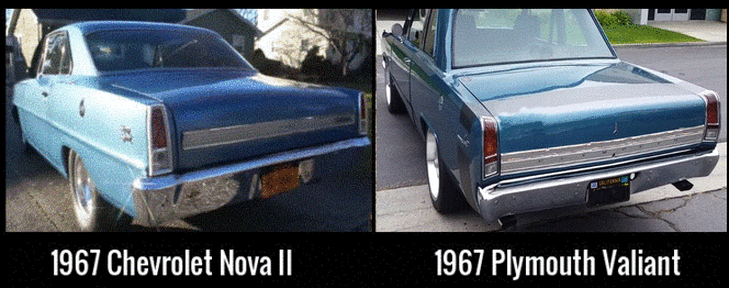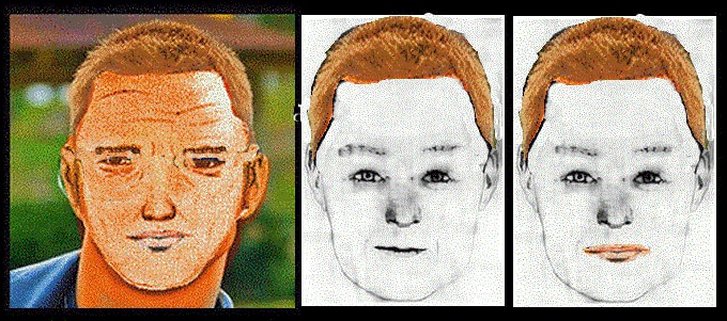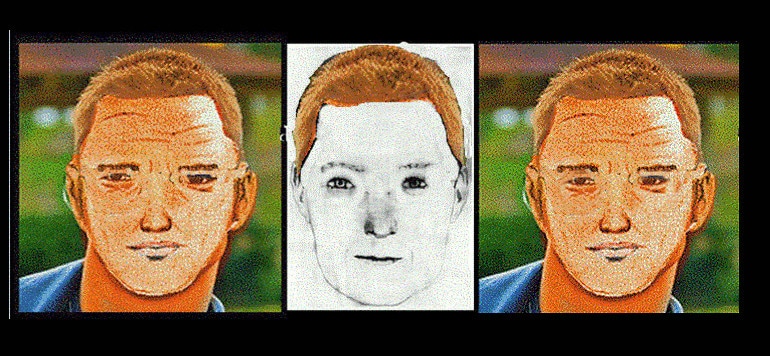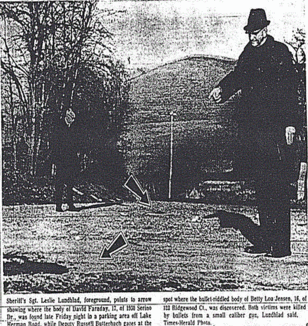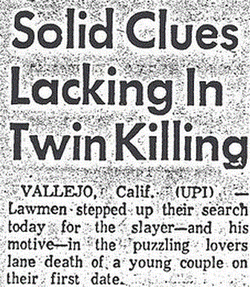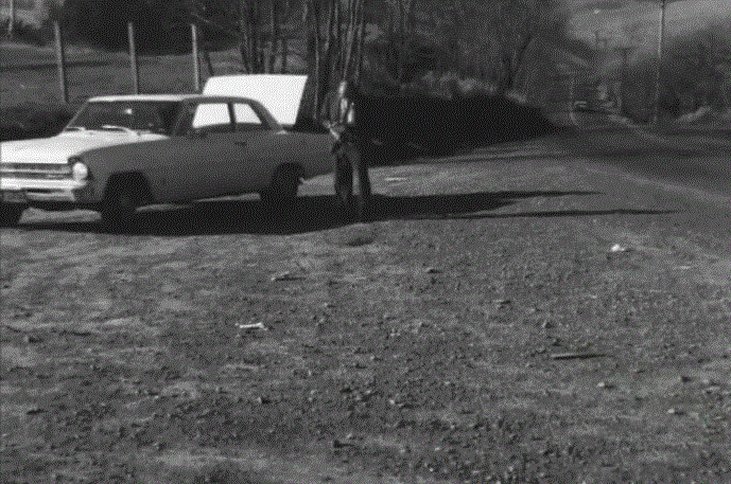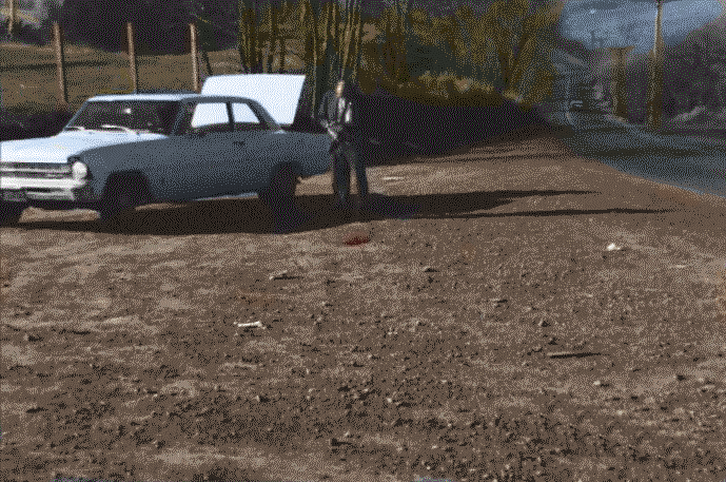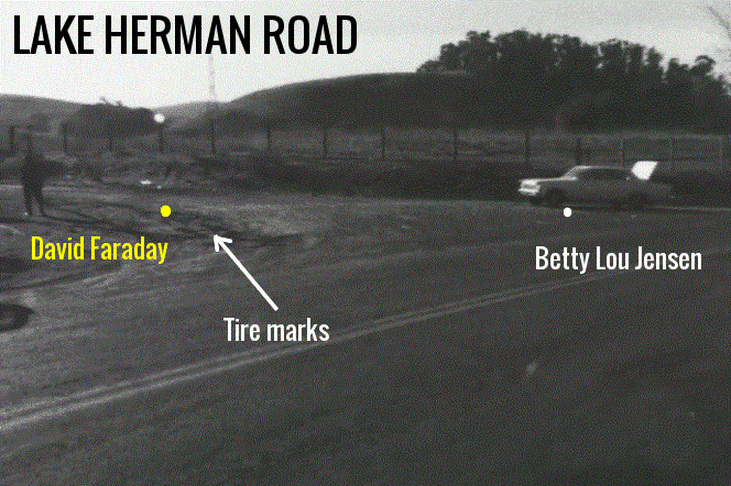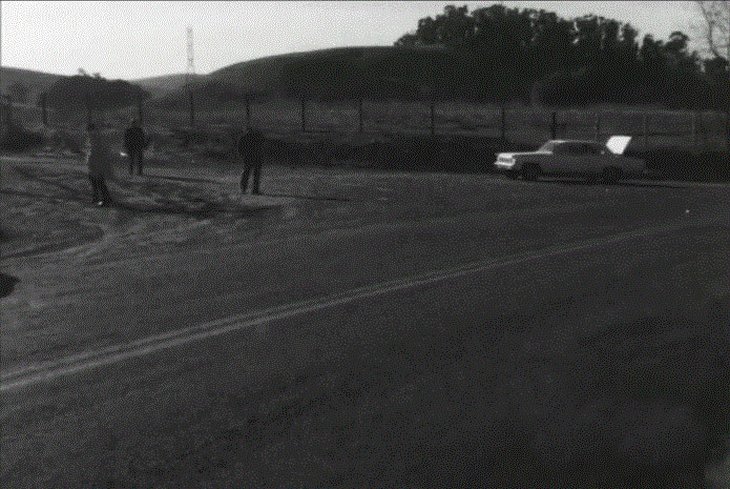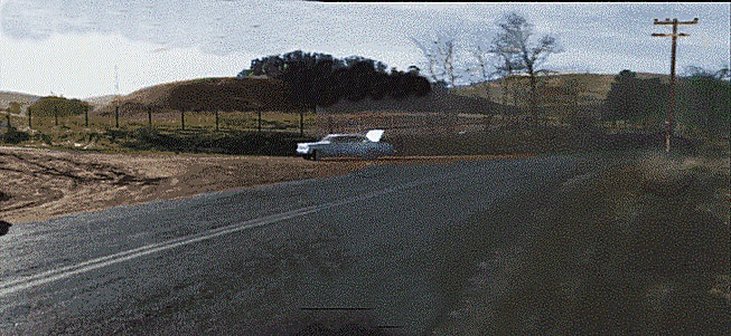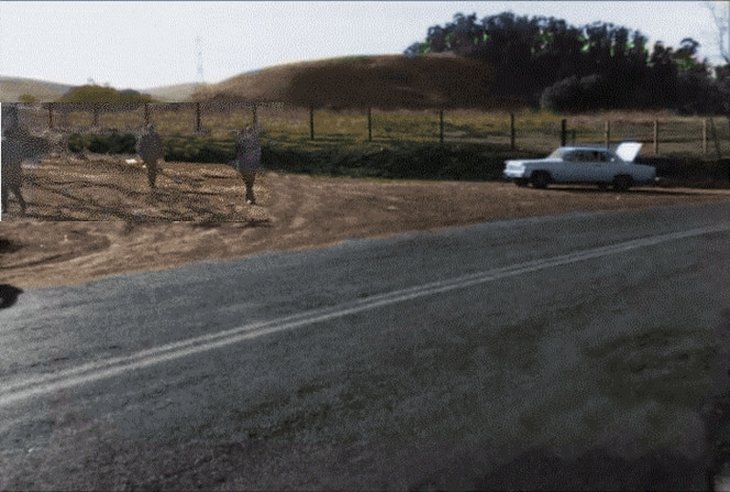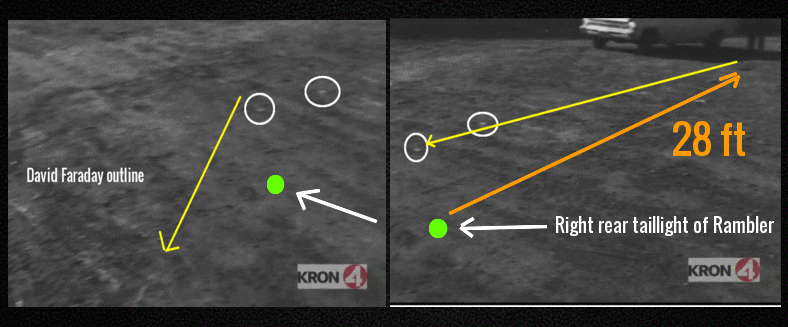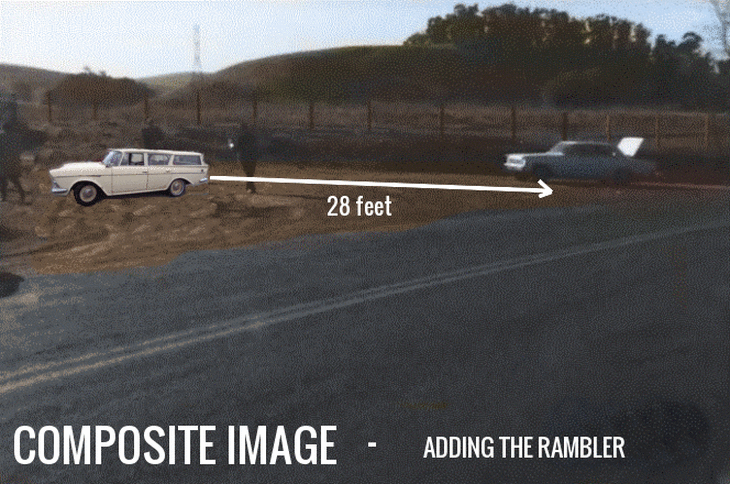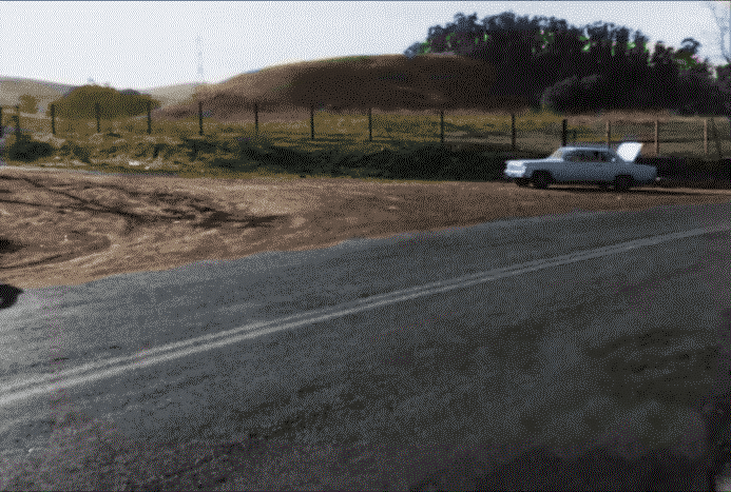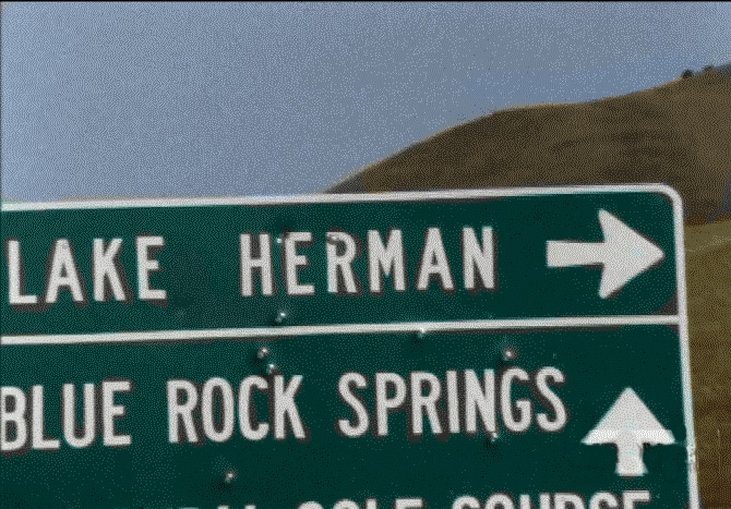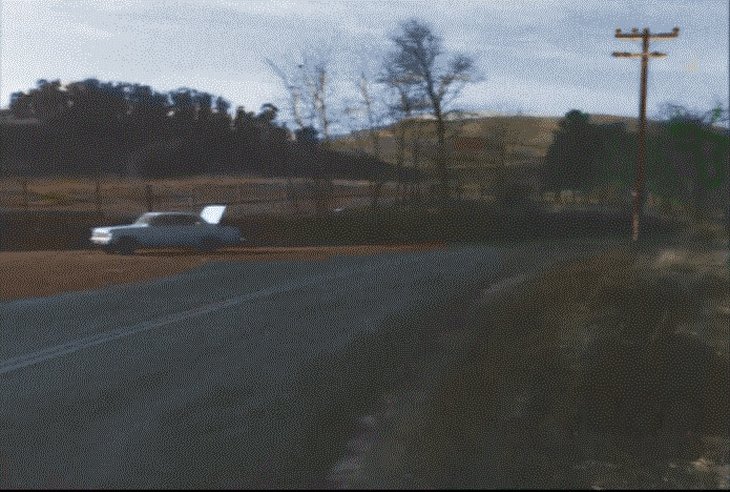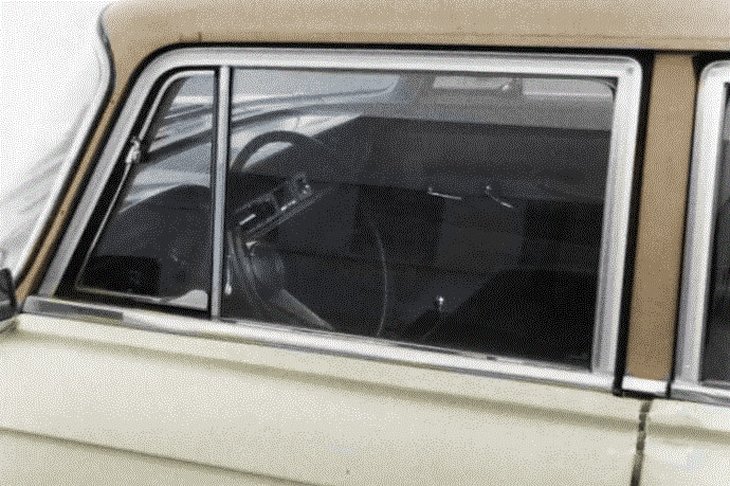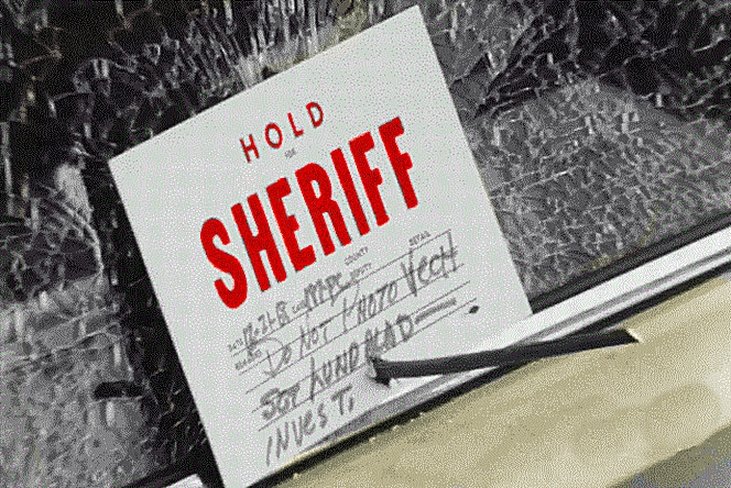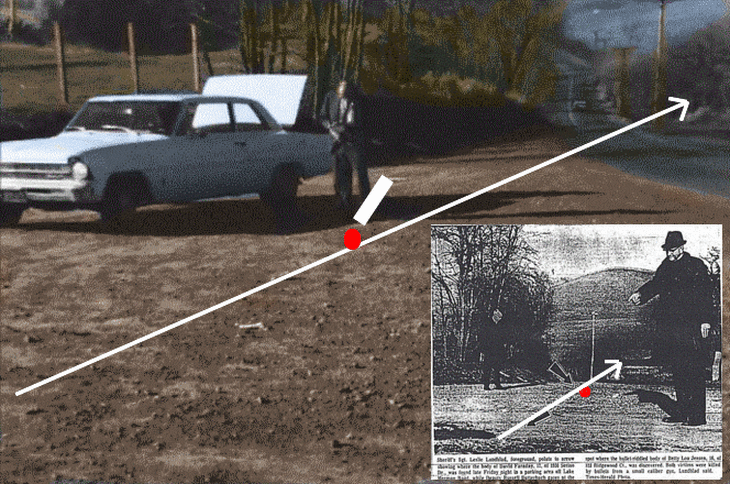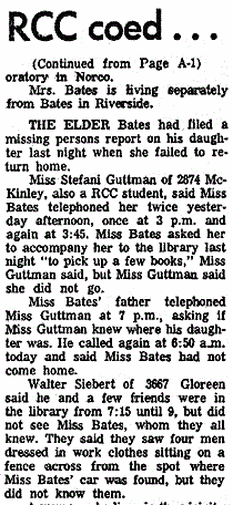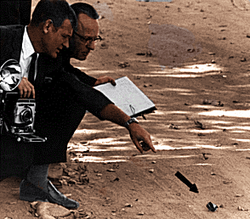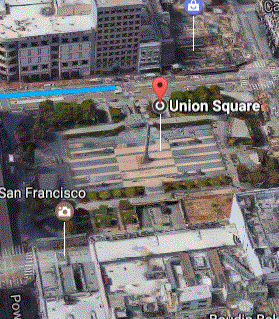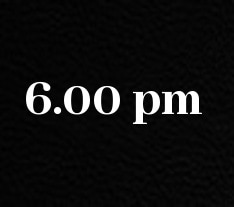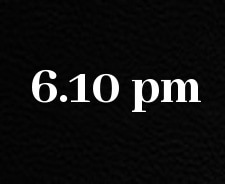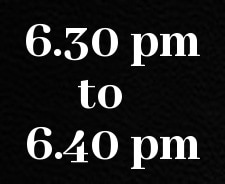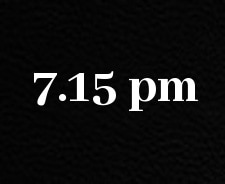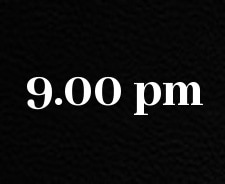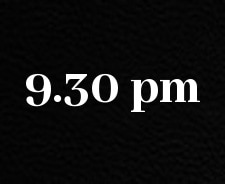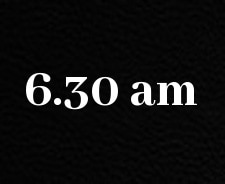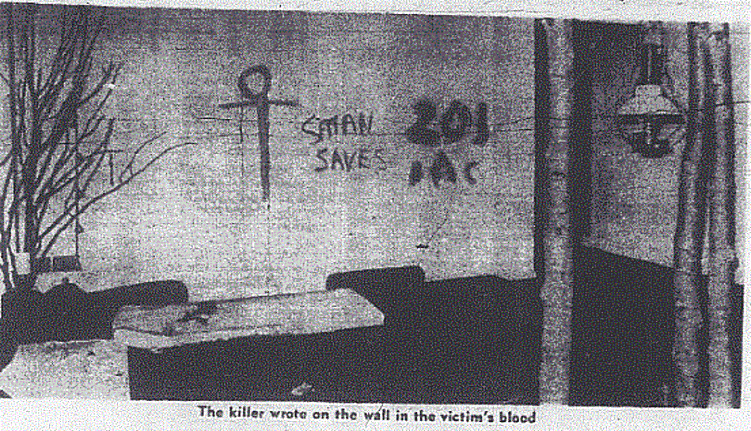
This is the Department of Justice ballistics report dated 3rd January 1969 regarding the Lake Herman Road shooting:
'We find that the exhibits correspond only with tests fired in J.C. Higgins Model 80, .22 automatic pistol. It should not be assumed the exhibits must have been fired in such a weapon, but this is the only type presently in our files that corresponds, therefore, it appears somewhat probable the weapon was of this type.
In addition to subjecting to further tests any J.C. Higgins Model 80 automatic pistol recovered, further tests should be made on any weapon having the following characteristics;
(A) Cartridge cases: Semi-circular firing pin impression at 12 o' clock position, small extractor markings at 3 o'clock position. Very faint ejector marking at 8 o' clock position (latter may not always be detectable).
(B) Weapon barrel or test bullets: Six right hand grooves, land and groove ratio 1:1+. Bullet groove width approximately 0.056 inch. Bullet land width approximately 0.060 inch.'
This report points out that although the offending weapon is likely a J.C. Higgins, it should not be regarded as certain. However it suggests that any weapon identified should be compared to the characteristics exhibited above, on the bullets and cartridge cases.
The next line of the DOJ report is significant, stating; 'Intercomparison of the cartridge cases in items 4 and 5 indicates that all are probably fired in the same weapon and all are the same make and type of ammunition. Due to lack of sufficient unique structure it appears that considerable difficulty will be encountered in identifying the responsible weapon if it should be recovered.' The cartridge cases mentioned in items 4 and 5 are the nine cases tested from the Lake Herman Road crime scene. The problem is that ten cartridge cases were ejected and removed from Lake Herman Road that night. It is with a high degree of certainty that the bullet casing lying on the floorboard of the Rambler, towed away to a designated location, was ultimately separated from the other nine and never reached the DOJ for testing.
In addition the report stated ''All bullets submitted were Western copper coated .22 long rifle bullets, although some were damaged, it was possible to determine ALL but Item [1] had 6 right hand groove class characteristics.'
Item [1] was the bullet recovered from David Faraday. The ballistics report could not rule that the bullet removed from David Faraday's head was different to the other bullets recovered, but nevertheless it couldn't rule it the same, as it didn't exhibit the same ' 6 right hand groove class characteristics,' as the rest.
http://www.zodiacciphers.com/zodiac-news/lake-herman-road-the-ballistics-report
'We find that the exhibits correspond only with tests fired in J.C. Higgins Model 80, .22 automatic pistol. It should not be assumed the exhibits must have been fired in such a weapon, but this is the only type presently in our files that corresponds, therefore, it appears somewhat probable the weapon was of this type.
In addition to subjecting to further tests any J.C. Higgins Model 80 automatic pistol recovered, further tests should be made on any weapon having the following characteristics;
(A) Cartridge cases: Semi-circular firing pin impression at 12 o' clock position, small extractor markings at 3 o'clock position. Very faint ejector marking at 8 o' clock position (latter may not always be detectable).
(B) Weapon barrel or test bullets: Six right hand grooves, land and groove ratio 1:1+. Bullet groove width approximately 0.056 inch. Bullet land width approximately 0.060 inch.'
This report points out that although the offending weapon is likely a J.C. Higgins, it should not be regarded as certain. However it suggests that any weapon identified should be compared to the characteristics exhibited above, on the bullets and cartridge cases.
The next line of the DOJ report is significant, stating; 'Intercomparison of the cartridge cases in items 4 and 5 indicates that all are probably fired in the same weapon and all are the same make and type of ammunition. Due to lack of sufficient unique structure it appears that considerable difficulty will be encountered in identifying the responsible weapon if it should be recovered.' The cartridge cases mentioned in items 4 and 5 are the nine cases tested from the Lake Herman Road crime scene. The problem is that ten cartridge cases were ejected and removed from Lake Herman Road that night. It is with a high degree of certainty that the bullet casing lying on the floorboard of the Rambler, towed away to a designated location, was ultimately separated from the other nine and never reached the DOJ for testing.
In addition the report stated ''All bullets submitted were Western copper coated .22 long rifle bullets, although some were damaged, it was possible to determine ALL but Item [1] had 6 right hand groove class characteristics.'
Item [1] was the bullet recovered from David Faraday. The ballistics report could not rule that the bullet removed from David Faraday's head was different to the other bullets recovered, but nevertheless it couldn't rule it the same, as it didn't exhibit the same ' 6 right hand groove class characteristics,' as the rest.
http://www.zodiacciphers.com/zodiac-news/lake-herman-road-the-ballistics-report

Responding officers questioned many of the eyewitnesses that night, including Peggy Your. She stated in the police report "They did have a gun with them that night, it was a .38 special with a small barrel and it was lying in the rear seat of the car. It was unloaded and Mr Your had the shells in his pocket."
Another eyewitness Robert Connelly was interviewed, being asked if he had a rifle. He stated 'he had an automatic rifle. The RO advised him of his constitutional rights at this time. Due to the fact he was in the area and he did have a rifle which he claimed he didn't have with him that night.'
Rangemaster George Parks tested several weapons on 28th December 1968. He test fired three rifles and made comparisons of shell casings with the casings in evidence. On the basis of his findings the following guns are eliminated as suspected weapons.
#1. Marlin automatic rifle; property of Robert Connelly.
#2. Remington automatic rifle, Model 550-1, property of James Owen.
#3. Ruger automatic rifle, SN 138577, property of James Owen.
The bullet that struck David Faraday's head was likely damaged, although didn't exhibit '6 right hand groove class characteristics,' as the rest. Bearing in mind David Faraday's body position in the Lake Herman Road turnout, he was likely facing west, standing next to the Rambler's rear right wheel, when he was shot in the left side of his head. Therefore it is plausible the shell casing observed on the front passenger floorboard of the Rambler was inextricably linked to this bullet recovered from David Faraday. Without an accurate comparison of this bullet and without locating the missing shell casing, it cannot be ruled out that these two pieces of ballistic evidence were not the product of a second gun and second shooter on the night of December 20th 1968.
The comparison by George Parks above, used to eliminate suspected weapons, was done using the shell casings, not the bullets, as some of the bullets were disfigured. The shell casings were free from distortion with identifiable extractor and ejector marks. These were used to rule out the weapons of Robert Connelly and James Owen.
The eyewitnesses interviewed in connection with Lake Herman Road, with near certainty were not involved in the double murder of David Faraday and Betty Lou Jensen. However, countless people were interviewed in the following months and no doubt innumerable other guns were eliminated using the shell casing comparison.
Another eyewitness Robert Connelly was interviewed, being asked if he had a rifle. He stated 'he had an automatic rifle. The RO advised him of his constitutional rights at this time. Due to the fact he was in the area and he did have a rifle which he claimed he didn't have with him that night.'
Rangemaster George Parks tested several weapons on 28th December 1968. He test fired three rifles and made comparisons of shell casings with the casings in evidence. On the basis of his findings the following guns are eliminated as suspected weapons.
#1. Marlin automatic rifle; property of Robert Connelly.
#2. Remington automatic rifle, Model 550-1, property of James Owen.
#3. Ruger automatic rifle, SN 138577, property of James Owen.
The bullet that struck David Faraday's head was likely damaged, although didn't exhibit '6 right hand groove class characteristics,' as the rest. Bearing in mind David Faraday's body position in the Lake Herman Road turnout, he was likely facing west, standing next to the Rambler's rear right wheel, when he was shot in the left side of his head. Therefore it is plausible the shell casing observed on the front passenger floorboard of the Rambler was inextricably linked to this bullet recovered from David Faraday. Without an accurate comparison of this bullet and without locating the missing shell casing, it cannot be ruled out that these two pieces of ballistic evidence were not the product of a second gun and second shooter on the night of December 20th 1968.
The comparison by George Parks above, used to eliminate suspected weapons, was done using the shell casings, not the bullets, as some of the bullets were disfigured. The shell casings were free from distortion with identifiable extractor and ejector marks. These were used to rule out the weapons of Robert Connelly and James Owen.
The eyewitnesses interviewed in connection with Lake Herman Road, with near certainty were not involved in the double murder of David Faraday and Betty Lou Jensen. However, countless people were interviewed in the following months and no doubt innumerable other guns were eliminated using the shell casing comparison.

The problem we have, is that the tenth casing was never tested in the Department of Justice report, only nine of the ejected casings. Therefore none of the guns tested for comparison can be ruled out as the source of this missing tenth casing, and quite possibly the bullet recovered from David Faraday at autopsy. If two shooters were involved that night, or even a second gun by the same shooter, the tested suspected firearm can never be eliminated from the double murder. At best it can likely be ruled out as the firearm used to murder Betty Lou Jensen.
It is not impossible that a suspect has been ruled out of the murders at Lake Herman Road using shell casing comparison, who owes the good fortune to one missing piece of ballistic evidence, the tenth casing.
Avid Zodiac researcher Mike Rodelli supplied some additional information regarding Lake Herman Road; "That missing casing is interesting. I remember being at Russ' home for several days in 2003 and he told me that he had one of the shell casings from LHR. We looked through several ashtrays of junk trying to find it but never did. I wonder if the one he had is the missing one, since the car would have been placed in possession of the SO after the shooting, as seen in several videos. Maybe he took it as a souvenir." If this is correct, then it may still be retrieved.
Sixteen shell casings have the capacity to be linked to the Zodiac case, either by comparison or to a suspected firearm, if we include the fifteen shell casings found scattered around the car of murder victims Koy Ien Saechao (48) and Choy Fow Salee (40), a Laotian couple brutality gunned down on the hard shoulder of a Sacramento highway on April 22nd 1986. Although not necessarily Zodiac victims, they appeared to be the subject of a possible Zodiac letter mailed to the San Francisco Chronicle on May 6th 1986.
It is not impossible that a suspect has been ruled out of the murders at Lake Herman Road using shell casing comparison, who owes the good fortune to one missing piece of ballistic evidence, the tenth casing.
Avid Zodiac researcher Mike Rodelli supplied some additional information regarding Lake Herman Road; "That missing casing is interesting. I remember being at Russ' home for several days in 2003 and he told me that he had one of the shell casings from LHR. We looked through several ashtrays of junk trying to find it but never did. I wonder if the one he had is the missing one, since the car would have been placed in possession of the SO after the shooting, as seen in several videos. Maybe he took it as a souvenir." If this is correct, then it may still be retrieved.
Sixteen shell casings have the capacity to be linked to the Zodiac case, either by comparison or to a suspected firearm, if we include the fifteen shell casings found scattered around the car of murder victims Koy Ien Saechao (48) and Choy Fow Salee (40), a Laotian couple brutality gunned down on the hard shoulder of a Sacramento highway on April 22nd 1986. Although not necessarily Zodiac victims, they appeared to be the subject of a possible Zodiac letter mailed to the San Francisco Chronicle on May 6th 1986.

My good friend Gregory Haugevik pointed out some of the similarities to the Dennis Rader case; "Zodiac, of course, was not a sexual sadist--not on the level of Rader anyhow, but when I see the similarities between them (the M.O. in specific incidents, the letters to the media, the cat-and-mouse games, even deluded notions about their victims in the afterlife) I honestly believe they were trapped within the same pathology. I am not a psychiatrist, but perhaps this pathology occurs in one out of every 100 million people and is brought to an extreme at an even lesser, infinitesimal rate. That these two killers lived in roughly the same era and culture, it should perhaps be less than surprising the manifestation of their illness resulted in the headline-grabbing terror carried out by each."
Dennis Rader also ceased his activities for over two decades, so the 1986 letter should not be dismissed on time and handwriting analysis alone, as handwriting would obviously change over a possible 8-12 year hiatus.
There are sixteen tangible pieces of evidence that could be used to answer many questions in the Zodiac case, that are eminently retrievable if the will is there. Unfortunately it probably isn't.
In addition to the aforementioned comparisons that could be made, the same could be said of Blue Rock Springs and Presidio Heights, where a total of ten shell casings were secured in evidence.
The whole of the above premise is based upon the belief that two people could have been involved in the first attack at Lake Herman Road, irrespective of whether the other crimes were committed by one person. It is not something to be pushed or promoted, just considered. But it relies heavily on the notion that one shooter fired at the Rambler as he approached it, then secured Betty Lou Jensen as she emerged from the passenger side of the vehicle. Then David Faraday exited the passenger side and was restrained by the second assailant. The order in which they were shot will never be known, but if the first shooter then releases Betty Lou Jensen and fires at her, he has effectively fired all nine shots thus far. David Faraday is then executed point blank by the second assailant, thereby generating a unique and separate casing to the other nine. It is ejected to his rear, into the front passenger side of the Rambler and is ultimately towed away by responding personnel, taking all the answers with it.
Dennis Rader also ceased his activities for over two decades, so the 1986 letter should not be dismissed on time and handwriting analysis alone, as handwriting would obviously change over a possible 8-12 year hiatus.
There are sixteen tangible pieces of evidence that could be used to answer many questions in the Zodiac case, that are eminently retrievable if the will is there. Unfortunately it probably isn't.
In addition to the aforementioned comparisons that could be made, the same could be said of Blue Rock Springs and Presidio Heights, where a total of ten shell casings were secured in evidence.
The whole of the above premise is based upon the belief that two people could have been involved in the first attack at Lake Herman Road, irrespective of whether the other crimes were committed by one person. It is not something to be pushed or promoted, just considered. But it relies heavily on the notion that one shooter fired at the Rambler as he approached it, then secured Betty Lou Jensen as she emerged from the passenger side of the vehicle. Then David Faraday exited the passenger side and was restrained by the second assailant. The order in which they were shot will never be known, but if the first shooter then releases Betty Lou Jensen and fires at her, he has effectively fired all nine shots thus far. David Faraday is then executed point blank by the second assailant, thereby generating a unique and separate casing to the other nine. It is ejected to his rear, into the front passenger side of the Rambler and is ultimately towed away by responding personnel, taking all the answers with it.

